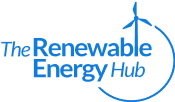Rapid Growth through Link Building
- Case Study: From $0 to $52,000 in 12 Months with Link Building
- Key Takeaways: This case study showcases an agency's journey from inception to earning $52,000 per month in a year, primarily through innovative link building strategies.
Authority Building in SEO
- Case Study: Building an SEO Authority Site
- Overview: Over 16 months, this case study details the process of turning a new site into an SEO authority site, highlighting the importance of organic traffic and adaptability to Google’s algorithm updates.
E-commerce SEO Success
- Case Study: Ranking a Brand New E-commerce Site
- Focus: This study tracks the SEO journey of a new e-commerce site in the groomsmen gifts niche, emphasizing strategic link building and gradual ranking improvement over several months.
Effective Link Building Techniques
- Case Study: Link Building Case Study | Ranking Outreach Labs
- Highlights: The study reveals how a site achieved first-page ranking for competitive keywords within 10 months, earning $42,000 per month, by employing varied link-building strategies including link insertions, guest posts, and digital PR.
Each of these case studies offers valuable insights into different aspects of SEO and link building, demonstrating practical strategies and resilience in the face of SEO challenges.
























